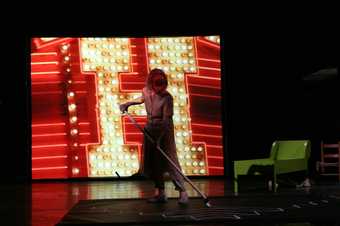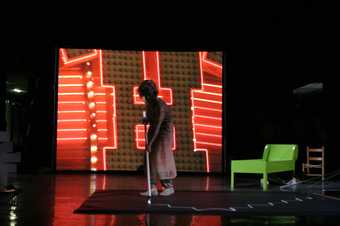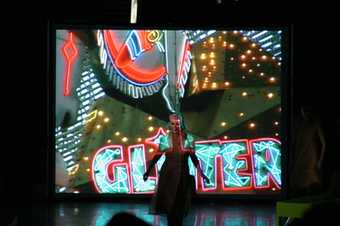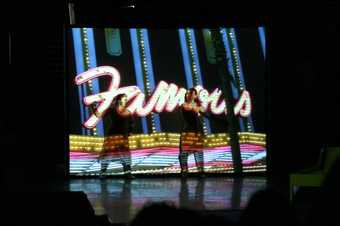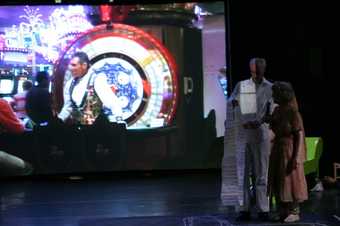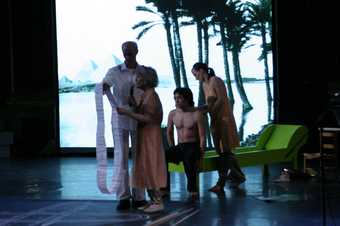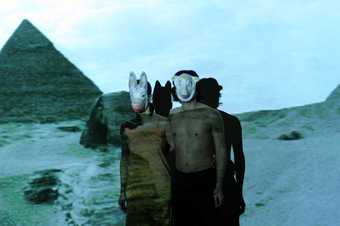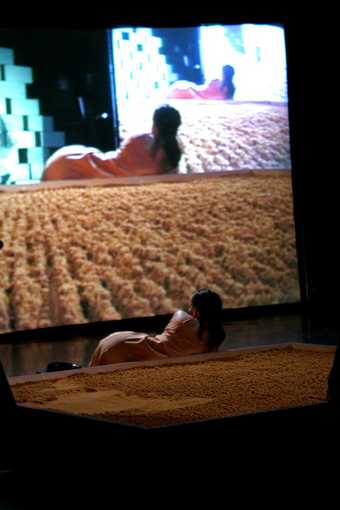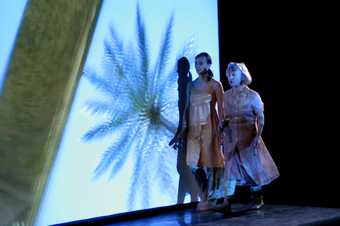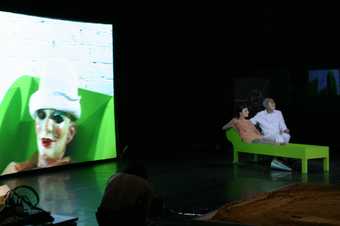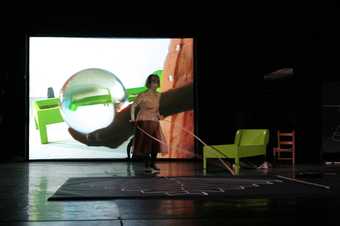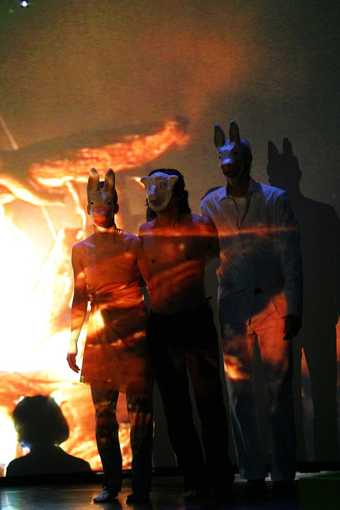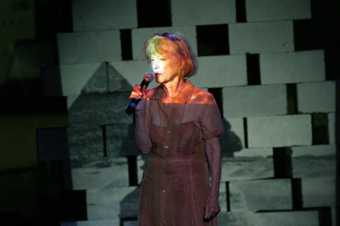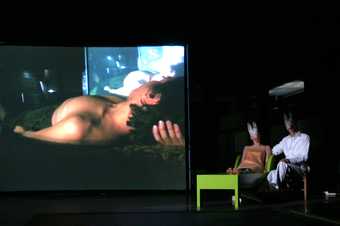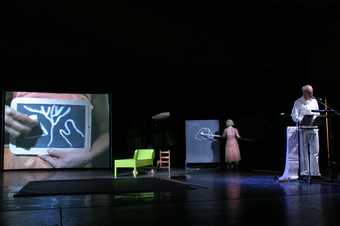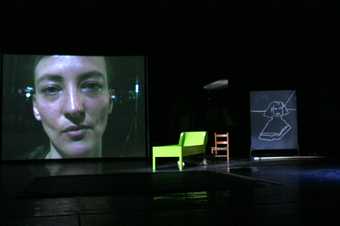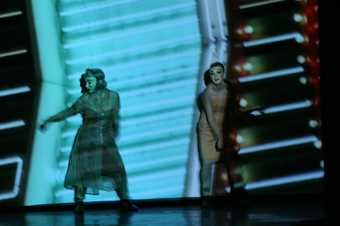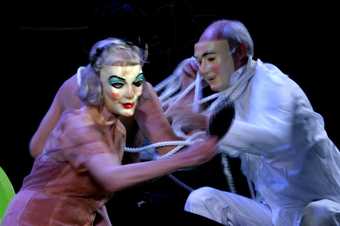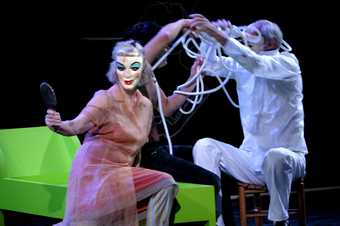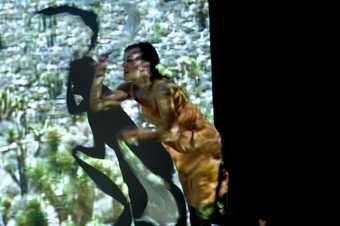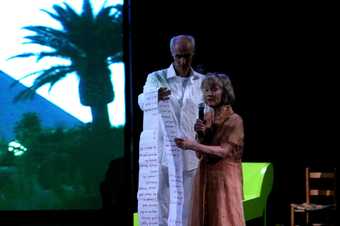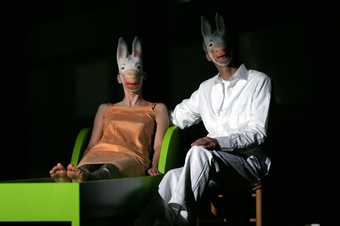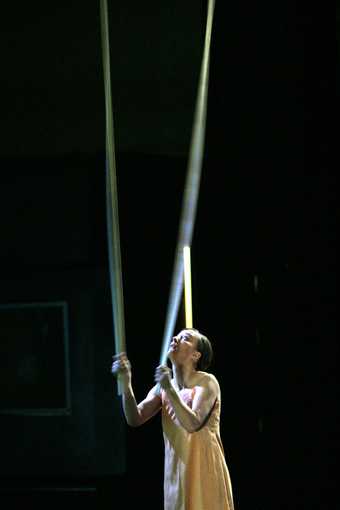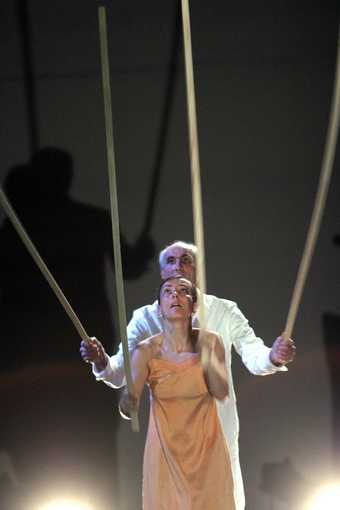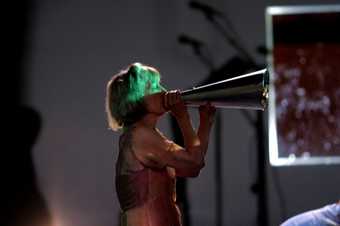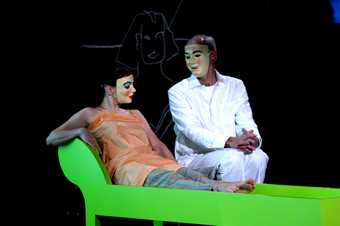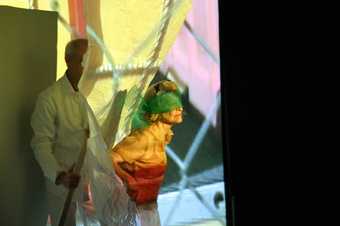Helen in Egypt: Lines in the Sand was a performance by the American artist Joan Jonas. It was concerned with the intersection of myth, mythology, history, or more broadly: reality and fiction. Jonas took as her source material Helen in Egypt, a poem by twentieth-century Imagist poet Hilda Doolittle (HD). HD’s poem reimagined the story of the Trojan War, taking Helen of Troy as the protagonist, and recasting the epic poem from a female perspective. While HD transposed Helen from being the cause of war and returned her agency, Jonas brought this alternative characterisation of Helen to modern day Las Vegas. Jonas was particularly interested in the resonance in contemporary society of Helen’s elevation to a mythical figure to justify war, which HD also explored, arguing that it was instead a fight over trade routes. Jonas also drew on another work by HD, ‘Tribute to Freud’, which detailed the poet’s psychoanalytic treatment by the psychoanalyst Sigmund Freud and indicated the poet’s interest in psychoanalysis as a literary technique. The resulting performance wove these texts together, along with the ancient Irish epic poem The Tain, drawing on their narratives and characters and reassessing them in a contemporary context.
Helen in Egypt was presented at Tate Modern in 2004 as both an installation and a performance. When it was inactivate the installation consisted of a single channel video, photographs, sculptural elements, paintings and a sandbox, in which the titular ‘lines in the sand’ had been drawn. Jonas made use, in both the installation and performance, of recurring motifs as ways to explore the blurring of fact and fiction represented by the source material. In one case she juxtaposed images of the pyramid building of the Luxor Hotel in Las Vegas with photographs taken by her grandmother of the pyramids in Egypt. In doing so Jonas asked what constituted the ‘real’, and what was ‘fake’. But really the artist was interested in the fluctuation between the real and the representative, drawing elaborate Egyptian icons on the floor and walls during the performance.
In the performance Jonas took the role of Helen, following the character developed by HD, woven through with elements from her own life as well as her grandmother’s 1910 trip to Egypt. As such she intersected personal narratives and famous epics, questioning how identity and self are constructed. In turn this was also explored through the context of the museum, a space in which reality and representation, history and myth are presented and juxtaposed. Jonas’s focus on Helen of Troy posed the problem of the role women play in myth and history as exemplary characters. In the performance Helen was brought down into the real world and imbued with faults and failures. The layers of images of the ‘real’ and the ‘fake’ created a work in which the audience was invited to critique the histories and myths which exist in culture. Jonas performed not only an exploration into the ‘realness’ of Helen of Troy as an historical character but also explored – through reference to Las Vegas – how Western societies absorb and appropriate myth in contemporary life and consumer culture.
Acatia Finbow
May 2016


